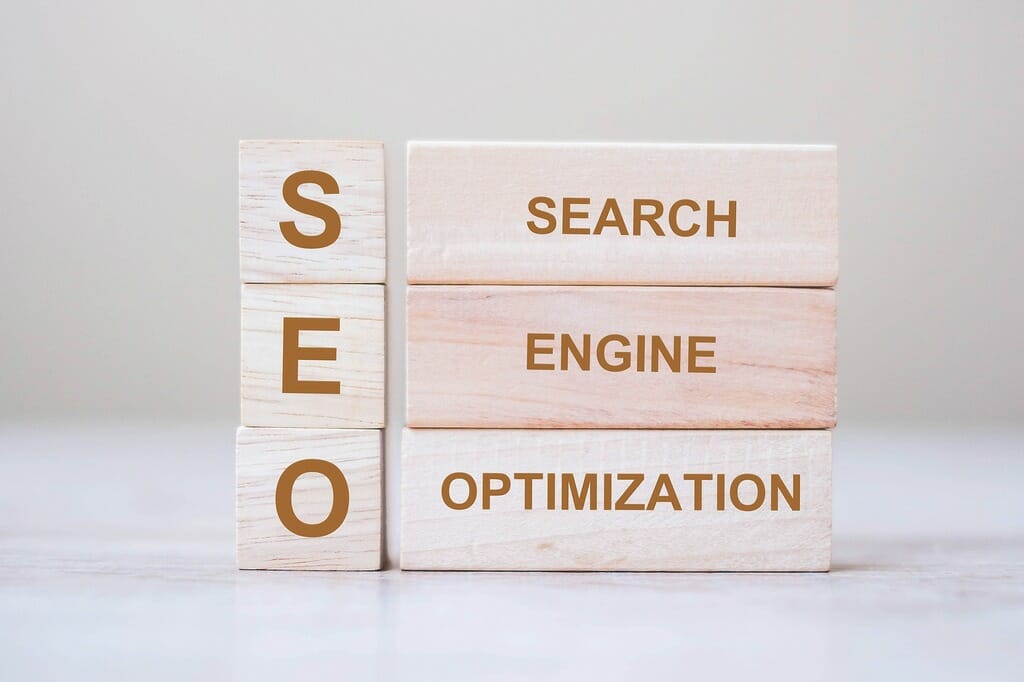

When it comes to being successful online, a website is more than just a digital footprint; it’s an essential tool that reflects your brand. But here’s a heads up – a fabulous website design alone doesn’t secure your spot on the digital stage. It’s a bit more nuanced than that.
In comes SEO, better known as Search Engine Optimization. Its capacity to turn the tide in favour of your website is instrumental in elevating your brand visibility on the internet’s grand libretto.
We are here to help you navigate the SEO sphere.
Our objective?
To teach you how to create and design a website optimized for search engines, a high-performance race car in the grand prix of the internet.
This article will be your compass, guiding you through the intricacies of SEO and arming you with actionable insights to outshine your competitors and improve your online visibility.
Let’s embark on this journey together towards mastering effective web design strategy coupled with sound search engine optimization techniques.
Are you ready to propel your website up the search engine ranks? Let’s get started.
Search Engine Optimization, fondly called SEO, is far more than a three-letter acronym; it’s the jet fuel that powers your website to greater visibility on the digital landscape.
So, what are the nuts and bolts of SEO?
In simple terms, SEO aims to revamp your website so that it’s friendlier to search engines like Google or Bing.
Think of SEO as teaching these search engines to understand and present your website to the audience looking for the value you offer.
Now let’s pull back the curtain: how exactly do these search engines work?
They are like vigilant spiders, weaving a massive web of information, crawling and indexing billions of web pages to find and present the most relevant ones to user queries.
And here’s the key: the better your SEO, the easier it is for these search engines to index and rank your site.
The upshot?
When done right, SEO is a powerful lever, driving organic traffic to your website and making it more visible in this bustling online space.
And anyone who’s mingled with the nitty-gritty of digital marketing will tell you that increased visibility means increased engagement, which ultimately translates to business growth.
SEO should be an integral part of any strong web strategy because, with SEO by your side, your website is not just another drop in the ocean; it’s a lighthouse guiding your customer’s home.
In digital marketing, an impactful web design and robust SEO are conjoined twins, functioning in unison to power your online presence.
Much like your favourite pasta sauce and spaghetti, they weave together, creating an enthralling experience for your audience and search engines alike.
Having a well-designed website is brilliant, but if your design isn’t whispering sweet nothings into search engines’ ears, you risk falling into digital oblivion.
This is where the marriage of design and optimization comes into the picture.
An SEO-friendly design isn’t just a pretty face; it speaks the language that search engines understand and love.
It directly impacts how your website is crawled, indexed, and ranked.
Beyond the allure of higher rankings, there’s a compelling narrative of enhanced user experience behind an SEO-friendly design.
Simplified navigational elements, responsive design, and optimized pages amplify your site’s appeal to search engines and create an immersive and convenient experience tailored for your users.
This creates a positive feedback loop: the more user-friendly your site is, the longer visitors stay, sending signals to search engines about your website’s value.
In essence, great design paired with smart SEO equals an exhilarating user experience and elevated visibility online.

Crafting an SEO-optimized website is like assembling a complex puzzle, where each piece connects to create a picture-perfect masterpiece.
Let’s explore the essential components contributing to weaving an enchanting digital tapestry.
Keywords are the compass that guides search engines to your content.
Identifying the phrases and terms that your target audience is searching for allows you to weave them seamlessly into your content, boosting your rankings and visibility.
A well-planned site structure directs users efficiently and effectively.
Employing schema markup and a silo structure tells search engines the relationship between your content, making it easier for them to crawl and index your website.
Dive deeper into the optimization pool by refining meta-tags, header tags, and alt tags and utilising SEO-friendly URLs.
These tactics improve your website’s relationship with search engines and elevate user experience.
Embracing a responsive design is pivotal – and rightly so with Google’s mobile-first indexing policy.
Ensure your website is just as appealing and functional on mobile devices as it is on desktops.
Ranking high is all about speed.
Improve your website’s loading time by optimising images, reducing server response time, and leveraging browser caching.
A faster website leads to a better user experience and higher ranking potential.
Security is paramount in today’s digital landscape.
Integrating SSL certificates and switching to HTTPS offers peace of mind to your users and signals to search engines that your website values security.
Last but not least, content is king.
Develop captivating, SEO-optimized content that resonates with your audience, establishes authority in your niche, and keeps them coming back for more.
By seamlessly blending these components, you’re bound to create a website that shines bright in the digital cosmos, proudly bearing the hallmark of SEO optimization.
Whether you’re in retail, healthcare, food and beverage, or technology, a robust, SEO-friendly web design can be a game-changer for your business.
Let’s dive into some real-world examples.
Take, for instance, a leading online fashion retailer.
By incorporating a responsive design and SEO-optimized product descriptions, they experienced a dramatic surge in organic traffic and sales, proving that, indeed, SEO can make your cash registers ring a happier tune.
Switching gears to healthcare, a renowned hospital revamped its website’s architecture, making it easier for search engines to crawl, index, and rank their content.
As a result, they noted a significant increase in patient bookings, underlying the importance of SEO even in life-saving industries.
In the world of food and beverage, a popular restaurant saw a huge boost in reservations by optimizing their website for local SEO and mobile usability.
Fueling up their website’s engine with SEO tactics cooked up a recipe for success.
Lastly, let’s analyze the technology world. A booming software company accelerated their growth by optimizing website speed and providing quality content which attracted high-value leads.
Their progress is a testament that SEO-friendly design spurs growth across all sectors.
These case studies serve as a compelling evidence that no matter your industry or size, an effective SEO-friendly web design can turn your website into a powerhouse of organic traffic and conversion, propelling you far beyond your competition.
Embarking on the journey of SEO web design can sometimes feel as though you’re walking a tightrope.
Maintaining balance and avoiding several common pitfalls that can derail your success is crucial.
One prevailing oversight is neglecting the importance of mobile optimization.
Remember, for Google and your user, mobile is no longer an option; it’s a necessity. Make the experience seamless across all devices to ensure you’re not losing out on a sizeable chunk of traffic.
Another roadblock is an ill-planned website architecture. A confusing sitemap not only sends your users scurrying away but also sends negative signals to search engine bots. Keep it clean, logical, and organized.
Keep the value of site speed the same. Loading time is a proven factor in user bounce rates and search engine rankings. A lean, finely-tuned website performs better than a bloated, sluggish one.
Investing time in keyword research is non-negotiable. Neglecting to use relevant keywords can result in a lower click-through rate, higher bounce rate, and lower time on site.
Lastly, ignoring the essential meta-tags in your website code can significantly impact your visibility. Ensure your descriptive meta-tags are in order and filled with relevant keywords.
In the grand scheme of SEO web design, it’s all about avoiding these common missteps and continuously steering towards user-friendly functions and google friendly strategies for the ultimate win-win situation.
Remember, Google’s algorithm may seem like a mystery. Still, it has one clear message: prioritize your user experience, and the rankings will follow.
As we reach the end of our discussion on SEO web design, it’s time to reflect on the key takeaways.
Remember, agile website architecture, responsive mobile optimization, speedy loading times, meticulous keyword research, and well-crafted meta-tags all serve as vital ingredients for a healthy SEO strategy.
It’s essential to understand that SEO and web design go hand-in-hand—an SEO-optimized website not only increases your online visibility but also contributes to a more user-friendly experience.
Striking the perfect balance between user satisfaction and search engine requirements is the recipe for an Internet success story.
So, don’t shy away from the challenge.
Embrace and adapt to an SEO-driven approach in your web design and witness your website climb the search engine rankings ladder.
The result will be a robust online presence that effectively caters to users and search engines alike, providing you with remarkable long-term benefits.
Step into the future with confidence, knowing that your SEO-friendly web design is a cornerstone for sustainable digital growth.
Need a SEO Web Design service? Contact us at Lamanify for FREE Consultation.



